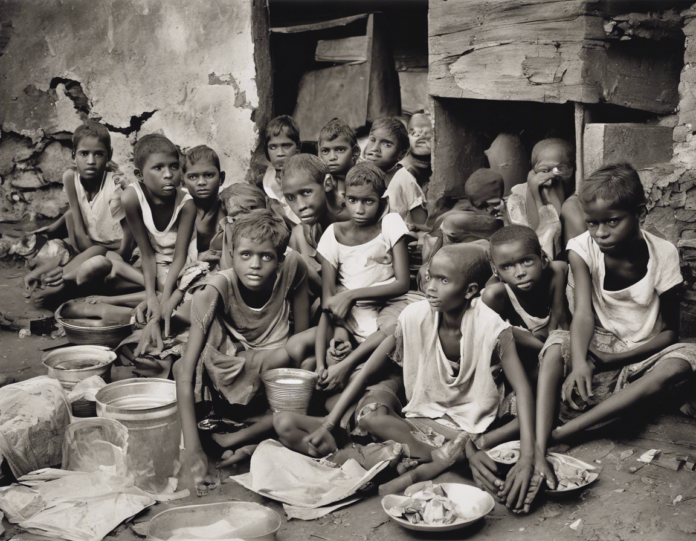Introduction
Poverty is a significant global challenge that transcends borders, affecting millions of individuals worldwide. The World Bank defines poverty as the inability to attain a basic standard of living due to lack of resources, including income, food, and shelter. In this comprehensive guide, we will delve into the complexities of poverty, its causes, consequences, and potential solutions. Specifically tailored for Class 9 students, this article aims to provide a deep understanding of the issue of poverty and inspire critical thinking on how it can be addressed.
Understanding Poverty
1. Types of Poverty
a. Absolute Poverty: Absolute poverty refers to the lack of basic necessities required to sustain life, such as food, shelter, and clothing. Individuals living in absolute poverty struggle to meet their daily needs.
b. Relative Poverty: Relative poverty is defined in relation to the economic status of other members of society. Individuals experiencing relative poverty may have access to basic necessities but are unable to afford the same standard of living as others in their community.
2. Causes of Poverty
a. Unemployment: Lack of employment opportunities and underemployment are key contributors to poverty. When individuals are unable to secure stable jobs that provide a decent income, they may fall into poverty.
b. Lack of Education: Limited access to quality education can perpetuate the cycle of poverty. Education equips individuals with the skills and knowledge needed to secure better-paying jobs and improve their economic status.
c. Health Issues: Poor health can lead to increased medical expenses and reduced productivity, pushing individuals further into poverty. Without access to affordable healthcare, individuals may struggle to break free from the cycle of poverty.
3. Consequences of Poverty
a. Malnutrition: Poverty often leads to inadequate access to nutritious food, resulting in malnutrition. Malnourishment can have long-term effects on physical and mental development, particularly in children.
b. Homelessness: Inability to afford proper housing can lead to homelessness. Homeless individuals are at a higher risk of poor health, exploitation, and social exclusion.
c. Limited Access to Opportunities: Poverty restricts access to opportunities such as education, healthcare, and decent employment. This perpetuates intergenerational poverty as individuals struggle to break free from their circumstances.
4. Solutions to Poverty
a. Education: Investing in education is key to breaking the cycle of poverty. By providing quality education to all individuals, societies can equip them with the skills and knowledge needed to improve their economic prospects.
b. Employment Opportunities: Governments and organizations can create job opportunities through investments in infrastructure, healthcare, and technology. Job creation enables individuals to earn a sustainable income and improve their living standards.
c. Social Safety Nets: Implementing social safety nets such as food assistance programs, healthcare subsidies, and cash transfers can help mitigate the immediate impacts of poverty on vulnerable populations.
Frequently Asked Questions (FAQs)
1. What is the poverty line?
The poverty line is the threshold below which individuals are considered to be living in poverty. It is often calculated based on the cost of basic necessities such as food, shelter, and clothing.
2. How does poverty impact children?
Children living in poverty are at a higher risk of malnutrition, limited access to education, and poor health outcomes. Poverty can hinder their overall development and future opportunities.
3. What role can individuals play in addressing poverty?
Individuals can contribute to poverty alleviation efforts by supporting local initiatives, advocating for policy changes, and raising awareness about the root causes of poverty.
4. How does poverty affect mental health?
Poverty can contribute to stress, anxiety, and depression due to financial insecurity and lack of resources. Individuals living in poverty may struggle to access mental health services.
5. What are some sustainable long-term solutions to poverty?
Investing in education, job creation, healthcare, and social welfare programs are crucial for addressing poverty in the long term. Sustainable solutions focus on addressing root causes and building resilient communities.
Conclusion
Poverty is a complex and multifaceted issue that requires a coordinated effort from governments, organizations, and individuals to address effectively. By understanding the root causes of poverty, its consequences, and potential solutions, we can work towards creating a more equitable society where everyone has the opportunity to thrive. As Class 9 students, you have the power to drive positive change and advocate for a future free from the grips of poverty. Keep learning, engaging with your communities, and seeking opportunities to make a difference. Together, we can build a more inclusive world where poverty is no longer a barrier to a fulfilling life.

